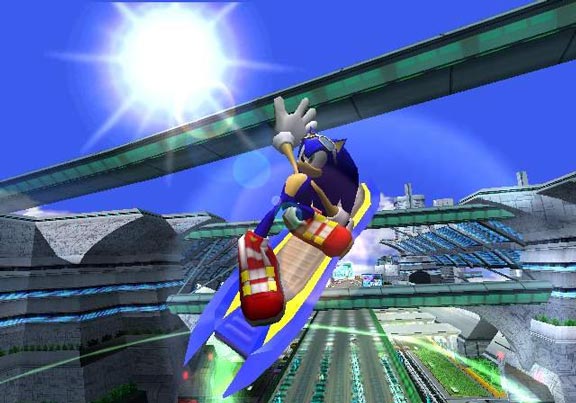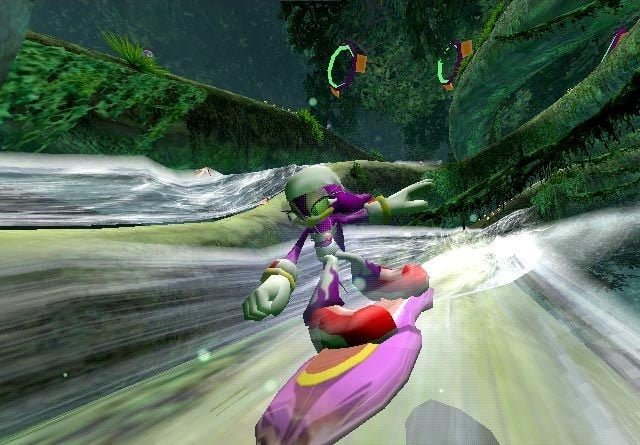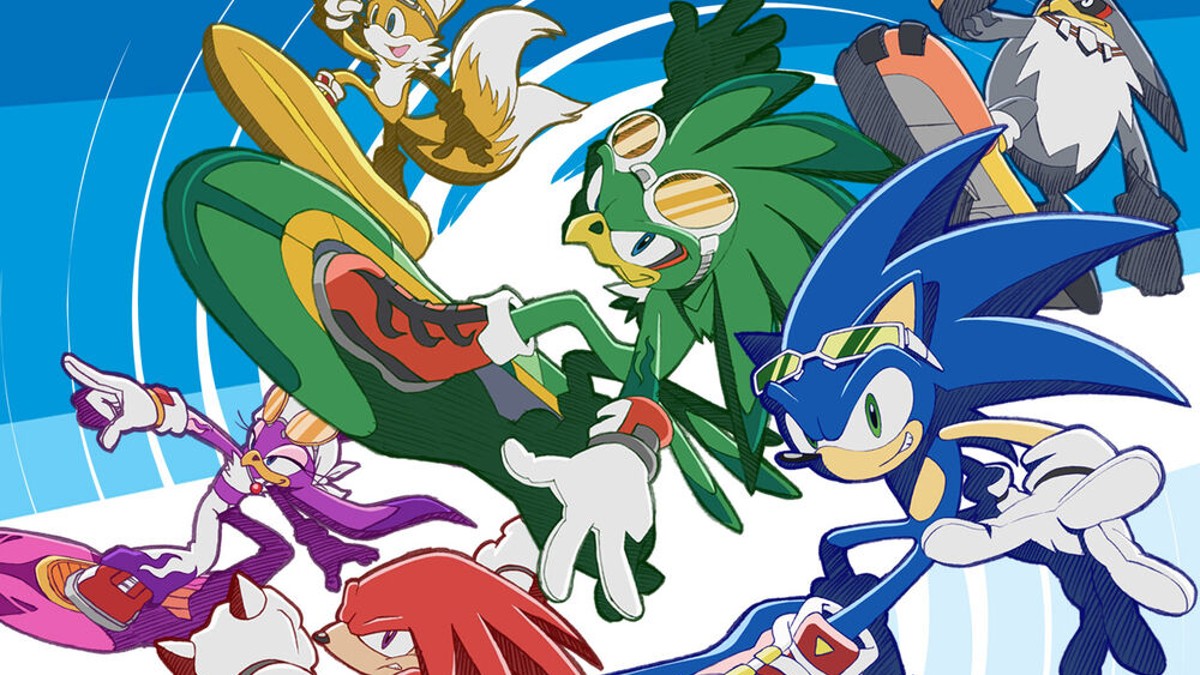As a 5th grader in late 2005, I was still fawning over images of Sonic the Hedgehog in every video game magazine I could get my hands on at Publix. By then, I had already played Sonic Adventure 2, Sonic Heroes, Sonic Advance 3, and Shadow the Hedgehog on top of watching Sonic X every Sunday morning — some broadcast networks in South Florida aired the 4Kids TV block a day after other states. Thereby, I was already accustomed to graphical style and gameplay changes across all of Sonic media. When I flipped to a story about Sonic Riders in Nintendo Power or GamePro (I forgot which gaming magazine it was now), I saw changes in not just the official artwork for Sonic and the gang, but also the mode of transportation. Far better than go-karts, the gang rode hoverboards, which were called Extreme Gear in the game.
About a week or so after Sonic Riders released in the spring of 2006, my friend Nicky asked his mom for the GameCube version of the game on the car ride to school. She delivered. Once he started playing it after school, he called me up and said, “Cristina, you gotta see this! It’s awesome!” I ran over to his house down the street and saw he wasn’t kidding. The anime opening for Sonic Riders was killer, the storyline blew me away, and the gameplay was unlike anything I — or rather, we — have ever seen in Mario Kart, SSX Tricky, and the Tony Hawk Pro Skater games combined.

Sonic Riders retained some of the gameplay elements from Sonic Heroes. Obstacles and shortcut gimmicks are tailored to each character’s type (Speed, Flight and Power). Racers level up every 30 Rings, giving them more air in their hoverboards and making their road rage attacks more powerful every level. The only difference was the graphics, with the characters’ appearing as though they were rendered by game dev students at DeVry University. This wasn’t a problem. Sonic Team changed their aesthetics on purpose to establish that the game is a spinoff, not canon to the main series. Being 12, it didn’t matter how Sonic and the others looked. What mattered was that the game was so fun to play, it made me want to ride a hoverboard in real life. To this day, I even daydream of the day I’ll get to see a hoverboard.
The idea of hoverboards may sound like science fiction because of movies like Back to the Future, but I like to see them as a science possibility. Nicky’s father saw them as a science possibility as well. After we asked him if such an advanced mode of transportation would ever come around, he said that hoverboards would fly within 25 years. I saw some truth to that prediction.
In one scene of the Heroes Story, Tails made a reference to the Kutta-Joukowski Lift Theorem. He explains to Knuckles that the Extreme Gear floats because “the control surface flow is balanced by the inverse kinetics of the…” before Knuckles cuts him off as the aerodynamics of the board was too much for him to absorb. This may sound like I’m pulling a Kanye West here, but let me finish. According to the Kutta-Joukowski Lift Theorem — named after early 20th-century aerodynamicists Martin Kutta and Nikolai Jukowski — the control surface flow is balanced by the inverse kinetics of the spinning cylinder and the velocity of its airflow. The easiest way to break this theorem down is that the top of the cylinder is assisting the airstream, speeding up the flow of air at the top of the cylinder. Once the Bernoulli equation comes into play, the pressure at the top of the cylinder decreases, giving it a lift from the ground.

The skateboarder phrase “major air” refers not only to the height at which skaters like Tony Hawk jump off the ramp, but also to the theorem that helps them achieve that lift. Since hoverboards run on air, the Kutta-Joukowski Lift Theorem should help them fly. They would only need extra mechanics to help circulate the air from below, much like how air turbines lift planes off the ground.
It’s been 16 years since I first played Sonic Riders in its entirety, and gave me some nice memories. It took me six months to beat the GameCube version because the controls were loosey-goosey, making me fall off the track too many times to count. In contrast, it took me about two weeks to beat the PS2 version because, in addition to my prior gameplay experience, the controls for that one were firmer, rendering my falls less frequent. Although I no longer have the means to play the game, I still dream of riding a hoverboard before I die. I’ll have to buy my friend’s father the finest bottle of wine when someone makes that dream a reality — hopefully, someone other than Elon Musk.







Published: Feb 23, 2022 03:12 pm